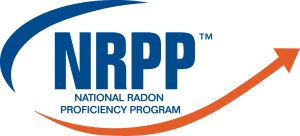
Comprehensive HUD Multifamily Solutions
Cardinalbama excels in providing commercial multi-family properties with reliable radon mitigation services. Our tailored approaches ensure that all occupants are afforded the highest levels of safety and compliance.
Our commercial HUD multifamily radon services include:
- Certified testing and mitigation by NRPP/NRSB professionals.
- Compliance with HUD standards and protocols.
- Custom mitigation solutions tailored to each property.
- Detailed documentation for loan approval processes.
- Advanced system design and installation techniques.
- Post-installation testing to ensure effectiveness.
Effective Protection for Residents and Property
Cardinalbama provides comprehensive radon solutions specially crafted for multi-family living environments. Our services ensure compliance and safety, using innovative strategies for radon mitigation and constant monitoring.
- Complete evaluation of property layout
- Custom-tailored mitigation designs
- Implementation of reliable safety systems
- Ongoing monitoring for radon levels
- Regular maintenance and system optimization
- Health compliance with industry regulations

Our Streamlined Process
Our comprehensive approach ensures efficient and compliant radon mitigation for commercial HUD multifamily projects.
Consultation
Discuss project needs, goals, and site specifics to shape tailored solutions.
Assessment
Conduct thorough inspections and radon testing to gather critical data.
Design & Install
Develop and implement a custom radon mitigation system for your site.
Verification
Verify system performance and provide compliance documentation.
Who We Serve
Our comprehensive commercial radon services are tailored to meet the unique needs of diverse industries, ensuring safety and compliance in every environment.
Property managers
We help properties including Apartment complexes, Medical facilities, Warehouse, Municipal buildings and more.
General contractors
Enhance property value and safety from the ground up on new construction properties for future occupants.
Multifamily
housing
Incorporate radon-resistant features in multi-family housing for future-proof health and safety of occupants.
Frequently Asked Questions About Commercial HUD Multifamily Radon Services
Here are our most frequently asked questions, but feel free to reach out if you have any other questions.
Unmatched Radon Mitigation Success Rates
Cardinalbama has achieved exceptional success in radon mitigation, ensuring safer living and working environments across multifamily dwellings.
Success Rate
Cardinalbama boasts a 100% success rate in achieving safe radon levels, demonstrating our commitment to quality and precision in every project.
Guarantee
We guarantee radon levels below 4.0 pCi/L in every completed project, ensuring compliance and peace of mind for our clients.
YEARS OF EXPERTISE
With over 30 years of professional experience, Cardinalbama is trusted for our expert radon mitigation services across the region.
Our Certifications
Cardinalbama is proudly certified by the industry’s leading organizations, reflecting our commitment to quality, safety, and professionalism. Our credentials ensure that we meet the highest standards for radon mitigation and testing services.





Resources About Radon Mitigation
Explore our collection of expert guides, articles, and resources designed to provide insightful information on radon mitigation and safety for commercial properties.
"*" indicates required fields
Optimize Your Property with Our Radon Mitigation Services
Ensure the safety and compliance of your multifamily property with our expert radon mitigation solutions. Our comprehensive services help protect tenants and reduce liability risks.


